Judge overturns snowmobile exemption to USFS Travel Management Rule
Effects of Noise on Wildlife, Human impacts, Vehicles, Wildlands Comments Off on Judge overturns snowmobile exemption to USFS Travel Management RuleWhen the US Forest Service initiated far-reaching Travel Management planning in 2005, mandating that all National Forests analyze off-road vehicle use on their lands, and specify roads and trails where off-road vehicles would be allowed, wilderness and quiet-use advocates were thrilled. Before that, many forests allowed free-ranging use of ATVs, dirt bikes, and other vehicles on any trail not specifically designated as off-limits with posted signs. Thanks to the all-too-common practice of removing such signs, along with the more-than-occasional off-trail use that created “new” trails over time, the new rules, which turned the tables by allowing vehicles only in areas clearly designated for their use was a big step forward. Those traveling by foot could look forward to having a bit more separation between themselves and lovers of motorized recreation; often, ridgelines separated basins where visitors could expect to find substantial natural quiet.
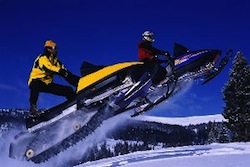 Except in winter. The groundbreaking Travel Management Rule specifically exempted snowmobiles from being subject to the limits contained in each forest’s local Travel Management Plan. The reasoning was that many of the damaging aspects of unfettered ORV use were less relevant in winter; in particular, damage to vegetation and streambeds, and all the related risks of increased erosion. These impacts are indeed significantly less in winter, though some soil compaction can occur beneath snowmobile trails over meadows.
Except in winter. The groundbreaking Travel Management Rule specifically exempted snowmobiles from being subject to the limits contained in each forest’s local Travel Management Plan. The reasoning was that many of the damaging aspects of unfettered ORV use were less relevant in winter; in particular, damage to vegetation and streambeds, and all the related risks of increased erosion. These impacts are indeed significantly less in winter, though some soil compaction can occur beneath snowmobile trails over meadows.
But one key impact from motorized use can actually be worse in winter: the noise footprint of the vehicles. Thanks to better sound transmission in cool air and across frozen, leafless landscapes, the sounds of snowmobiles often travel much further than the sounds of ATVs and dirt bikes in summer. This can clearly impact other forms of recreation, as well as disturbing animals who are sensitive to noise intrusions. In Idaho, lovers of “quiet recreation” worked hard to get snowmobiles included in national and regional travel planning, and when they failed, the national Winter Wildlands Alliance took the question to the courts.
This week, a Federal Judge in Boise agreed that the exclusion of snowmobiles from an otherwise comprehensive approach to travel management planning was “arbitrary and capricious” and “contrary to law,” ordering the Forest Service to revise the 2005 Travel Management Rule within 180 days to include snowmobile management. According to the AP:
Mark Menlove, executive director with the Winter Wildlands Alliance, said the decision was a monumental victory for backcountry skiers and other winter recreationists seeking a peaceful experience in the woods. The group’s goal is to not shut down snowmobiles in national forests, but force the agency to designate specific boundaries that carve out distinct areas for those who want to explore on powered sleds and those preferring skis, snowshoes and hiking boots.
“Many of our members use snowmobiles more and more to get to certain places, so we’re not in any way asking the forest service to ban them,” Menlove told The Associated Press on Monday. “But we are asking for some balance there, where our constituents can go and find peace and powder snow in the backcountry.”
While this ruling applies only to National Forests in Idaho, it may lead to similar reviews and expansion of travel management planning nationwide.

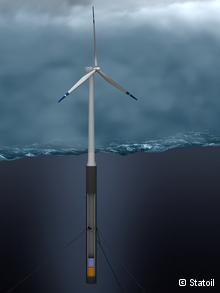 Watching the decade-long struggle in Massachusetts to build Cape Wind, the nation’s first offshore wind farm, researchers and state officials in Maine have chosen a different path: they decided to tackle the engineering challenges of building turbines that can float in deep water far offshore, rather than the social challenges of building wind farms in shallow water close to shore (which use fundamentally the same foundation designs as onshore turbines). Floating deepwater turbines can take advantage of even stronger, more consistent winds than their nearshore counterparts; along most of the east coast, offshore wind is far more reliable than onshore locations.
Watching the decade-long struggle in Massachusetts to build Cape Wind, the nation’s first offshore wind farm, researchers and state officials in Maine have chosen a different path: they decided to tackle the engineering challenges of building turbines that can float in deep water far offshore, rather than the social challenges of building wind farms in shallow water close to shore (which use fundamentally the same foundation designs as onshore turbines). Floating deepwater turbines can take advantage of even stronger, more consistent winds than their nearshore counterparts; along most of the east coast, offshore wind is far more reliable than onshore locations.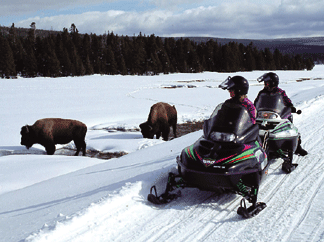 In the years since, the two-year extension of the Bush-era temporary plan stretched to four, and finally the new proposed plan has been released. In truth, it isn’t all that different than the Bush plan in terms of total numbers of snowmobiles and snowcoaches, though it tweaks a few elements in ways that may reduce some impacts, especially air quality, over time. It seems likely that the noise impacts will be roughly similar to those documented in a series of studies we
In the years since, the two-year extension of the Bush-era temporary plan stretched to four, and finally the new proposed plan has been released. In truth, it isn’t all that different than the Bush plan in terms of total numbers of snowmobiles and snowcoaches, though it tweaks a few elements in ways that may reduce some impacts, especially air quality, over time. It seems likely that the noise impacts will be roughly similar to those documented in a series of studies we 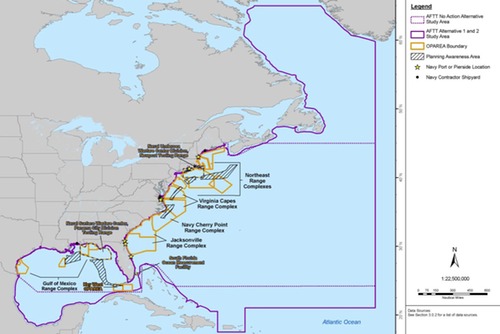
 You may have seen some press coverage recently of the latest iteration of Cornell’s Macauley Library of Natural Sounds online. Today, Wired put together a fun little
You may have seen some press coverage recently of the latest iteration of Cornell’s Macauley Library of Natural Sounds online. Today, Wired put together a fun little 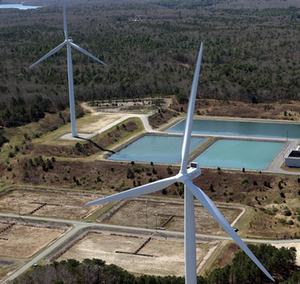 Even before meetings began, facilitators of the multi-stakeholder group convened in Falmouth to address widespread neighborhood complaints about noise from two town-owned turbines realized that the original goal of having group develop a consensus recommendation was too high a bar to aim for. So, the process was dubbed the “Wind Turbines Options Analysis Process,” with a hope of being able to present two or three options to the Selectmen for consideration before this spring’s Town Meeting.
Even before meetings began, facilitators of the multi-stakeholder group convened in Falmouth to address widespread neighborhood complaints about noise from two town-owned turbines realized that the original goal of having group develop a consensus recommendation was too high a bar to aim for. So, the process was dubbed the “Wind Turbines Options Analysis Process,” with a hope of being able to present two or three options to the Selectmen for consideration before this spring’s Town Meeting.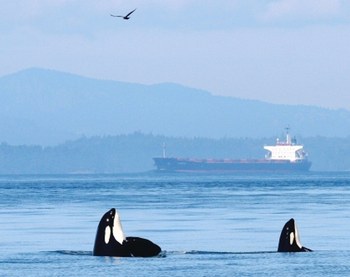 In the wake of
In the wake of 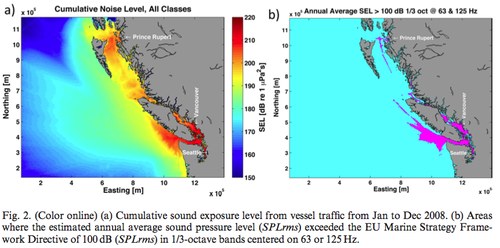
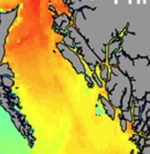 That’s an inland waterway that heads up to Kitimat, the proposed site of a major new port, the Northern Gateway, which would serve as the primary port for shipping tar sands oil to Asia. An annual total 220 super-tankers would head though that currently mostly-yellow zone, all the way up that long, narrow channel that points to the upper right hand corner of this close-up (and leave again
That’s an inland waterway that heads up to Kitimat, the proposed site of a major new port, the Northern Gateway, which would serve as the primary port for shipping tar sands oil to Asia. An annual total 220 super-tankers would head though that currently mostly-yellow zone, all the way up that long, narrow channel that points to the upper right hand corner of this close-up (and leave again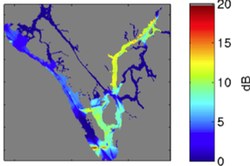 A second study by the same research team, led by Christine Erbe, took a close look at current and likely increases in shipping noise, should Northern Gateway go forward, and what they found is not reassuring. Noise levels will increase by up to 6dB in the approach lanes in Caamano Sound, and by 10-12dB in the narrow fjord into Kitimat (see map on right). In the western channel (the wider approach), where sound would likely increase 3-6dB (representing a doubling to quadrupling of sound energy), Humpbacks would hear tankers and their accompanying two tugboats for 43% of daylight hours, and orcas (due to thier higher-frequency hearing, less intruded upon by low-frequency ship noise) would hear the tankers 25% of the time. Fewer whales venture all the way up the fjords, but some would likely be present in the bend in the route, where noise levels would increase by 10dB, representing a 10-fold increase in sound energy.
A second study by the same research team, led by Christine Erbe, took a close look at current and likely increases in shipping noise, should Northern Gateway go forward, and what they found is not reassuring. Noise levels will increase by up to 6dB in the approach lanes in Caamano Sound, and by 10-12dB in the narrow fjord into Kitimat (see map on right). In the western channel (the wider approach), where sound would likely increase 3-6dB (representing a doubling to quadrupling of sound energy), Humpbacks would hear tankers and their accompanying two tugboats for 43% of daylight hours, and orcas (due to thier higher-frequency hearing, less intruded upon by low-frequency ship noise) would hear the tankers 25% of the time. Fewer whales venture all the way up the fjords, but some would likely be present in the bend in the route, where noise levels would increase by 10dB, representing a 10-fold increase in sound energy.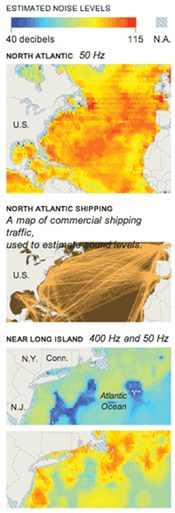 In December, NOAA
In December, NOAA 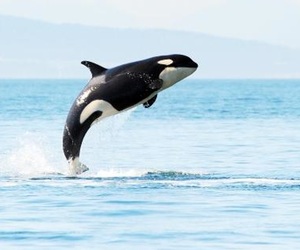 NOAA Fisheries announced on Monday that it would review the status of the southern resident population of killer whales, in response to a delisting petition from California farmers. In addition to boat noise, a decrease in salmon runs is a key driver of reduced orca populations, and protection plans for the orcas include protections for salmon, including maintaining river flows. The farmers claim this is denying them the water they need. The heart of the petition is a challenge to NOAA’s determination that this local population is genetically distinct and deserving protection, although the species as a whole is not threatened.
NOAA Fisheries announced on Monday that it would review the status of the southern resident population of killer whales, in response to a delisting petition from California farmers. In addition to boat noise, a decrease in salmon runs is a key driver of reduced orca populations, and protection plans for the orcas include protections for salmon, including maintaining river flows. The farmers claim this is denying them the water they need. The heart of the petition is a challenge to NOAA’s determination that this local population is genetically distinct and deserving protection, although the species as a whole is not threatened.